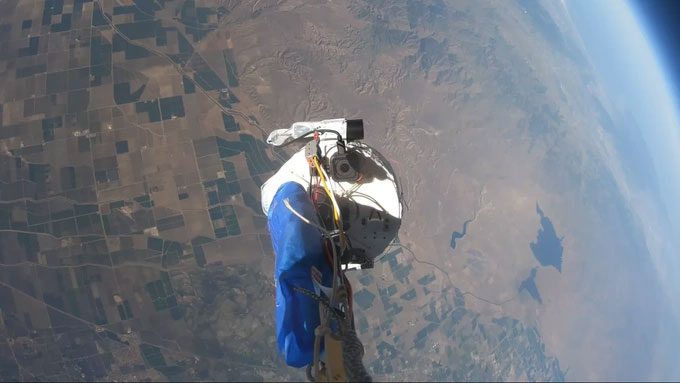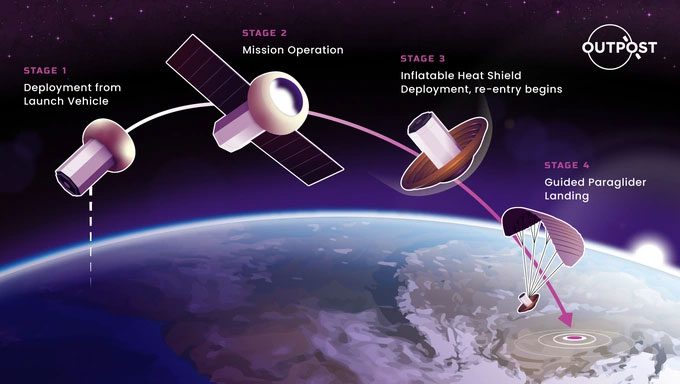Experimenting with a paraglider allows Outpost Technologies to bring objects from space back to Earth for testing or repair.
According to a NASA report, there are at least 26,000 pieces of space debris orbiting Earth that are the size of a softball—large enough to destroy a satellite. Among these, over 500,000 fragments the size of a marble could damage spacecraft, while more than 100 million smaller pieces could puncture space suits.

In the stratosphere, Outpost Technologies is testing the idea of a “space ferry” using a paraglider to bring satellites and space hardware back to Earth. (Photo: Outpost).
To address this issue, Outpost Technologies—a startup based in the United States—has proposed an audacious experiment: transporting satellites and rockets hovering in space back to Earth using a paraglider.
The plan put forth by Outpost Technologies involves launching satellites into orbit with a small vehicle. They will then guide them back into the atmosphere using a paraglider, at subsonic speeds.
This will enable a safe landing of the equipment, satellites, or rockets on Earth without any components being burned up during the atmospheric re-entry process.
Outpost Technologies also employs a similar method to bring space debris, including old satellites and fragments, back to Earth.

Steps to return space objects to Earth using a paraglider. (Photo: Outpost).
Experts believe this idea responds to the emergence of reusable rocket stages by companies like Blue Origin and SpaceX. Additionally, refueling first-stage satellites may become feasible in the future.
“I truly believe that one day there will be millions of people living and working in space. Honestly, that won’t happen if we don’t have a clear roadmap,” said Jason Dunn, CEO of Outpost Technologies.
So far, the concepts from this American startup are in the design and initial testing phase. The company has raised $7 million in seed funding for the project.
Previously, Hanspeter Schaub, a professor of Aerospace Engineering at the University of Colorado Boulder, suggested cleaning up space debris using an “electromagnetic gun,” which would allow operators to slow down or redirect debris.
Another solution proposed by the Japan Aerospace Exploration Agency (JAXA) involves firing a tether at the debris from a spacecraft and then pulling it down into the atmosphere.
However, it can be observed that these methods remain quite distant and challenging to implement in practice. Not to mention the risks of failure during the testing of these projects, which could lead to a series of accompanying disasters.


















































